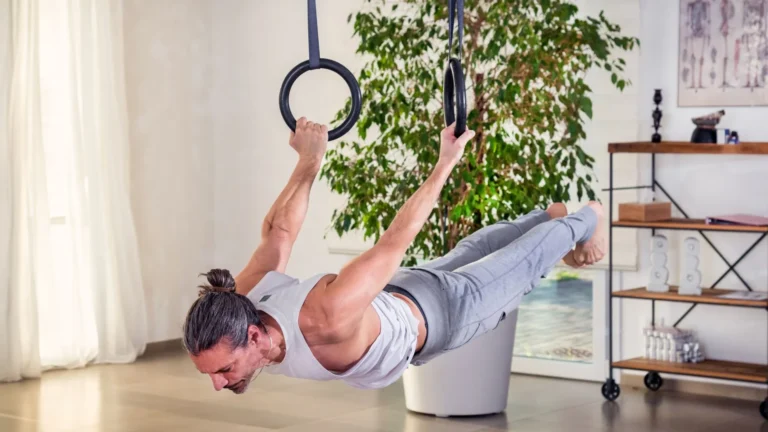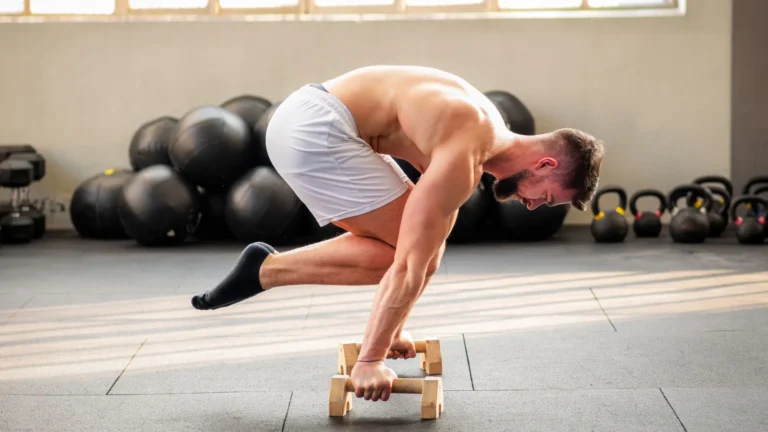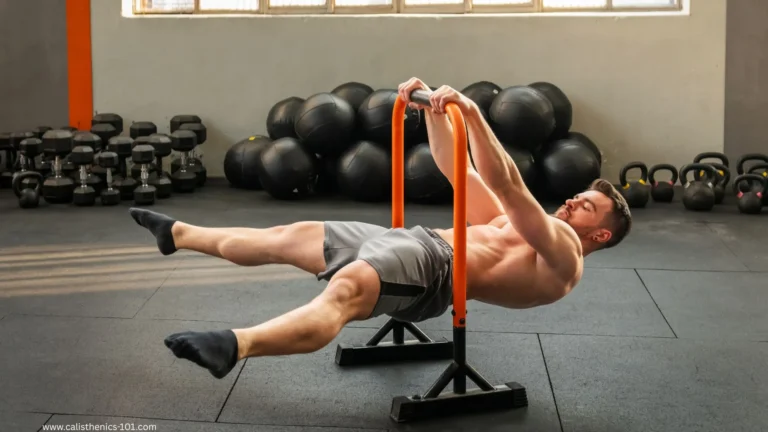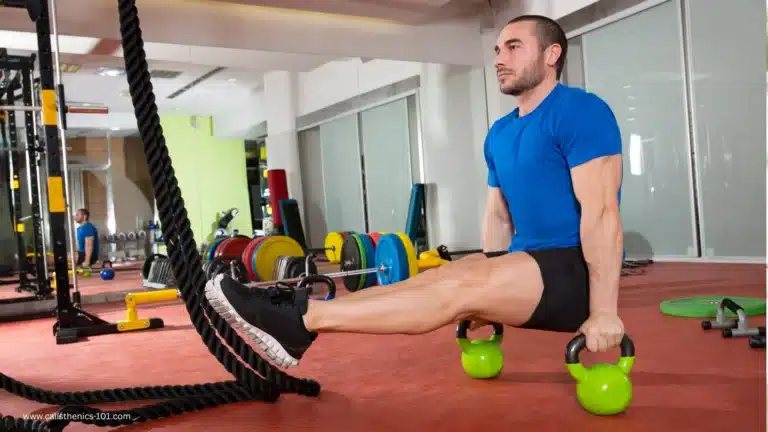Chin Up vs Pull Up: 5 Powerful Truths for Massive Muscle Gains
Table of Contents
If you’ve ever found yourself wondering whether chin ups or pull ups are better for building muscle and strength, you’re not alone. The “Chin Up vs Pull Up” debate is a classic topic in the world of fitness, especially among calisthenics enthusiasts, strength trainers, and beginners looking to get the most out of their workouts.
Despite looking similar at a glance, these two bodyweight exercises have distinct mechanics, target different muscle groups, and produce varying results. So which one should you focus on for maximum gains? Let’s break it all down.
What’s the Difference Between a Chin Up and a Pull Up?
While both exercises involve pulling your body upward using a horizontal bar, the primary difference lies in the grip.
Grip and Hand Position
- Chin Up: Performed with a supinated grip (palms facing toward you).
- Pull Up: Uses a pronated grip (palms facing away from you).
This seemingly small difference changes muscle recruitment significantly.
Range of Motion and Form
- In chin ups, your elbows stay closer to your body, which emphasizes the biceps more.
- In pull ups, your elbows flare out more, placing greater emphasis on the upper back and lats.
A table comparison can help clarify:
| Feature | Chin Up | Pull Up |
|---|---|---|
| Grip Type | Supinated (palms in) | Pronated (palms out) |
| Primary Muscles Used | Biceps, lats | Lats, upper back, traps |
| Difficulty Level | Slightly easier | Slightly harder |
| Beginner Friendly | Yes | Yes, but more challenging |
Muscles Worked: Chin Up vs Pull Up
Understanding what muscles each movement activates will help you decide which to incorporate based on your goals.
Chin Ups Target:
- Biceps brachii (primary)
- Latissimus dorsi
- Brachialis and brachioradialis
- Core (stabilization)
Pull Ups Target:
- Latissimus dorsi (primary)
- Rhomboids and trapezius
- Rear deltoids
- Biceps (secondary)
- Core (stabilization)
Chin ups are often favored by those wanting to build bigger biceps, while pull ups are excellent for developing a wider back and enhancing upper body pulling strength.
Here’s a comparison table:
| Muscle Group | Chin Up Activation | Pull Up Activation |
| Biceps | ⭐⭐⭐ | ⭐⭐ |
| Lats | ⭐⭐ | ⭐⭐⭐ |
| Traps | ⭐ | ⭐⭐ |
| Core | ⭐ | ⭐ |
Which Builds More Muscle and Strength?
Strength Development
If your goal is to build raw pulling strength, both exercises have a place in your routine. However:
- Chin ups tend to allow for more reps or additional load due to bicep involvement and favorable mechanics.
- Pull ups require more back strength and shoulder mobility, which can translate better to overall functional strength.
Muscle Hypertrophy (Size)
- Chin ups are more effective for bicep hypertrophy.
- Pull ups engage the upper back more, helping to build width and thickness.
For balanced development, incorporating both is ideal.
In your fitness journey, choosing between chin ups and pull ups often comes down to your training style and body mechanics. Some lifters naturally find chin ups more comfortable due to better leverage on the biceps, while others thrive with the lat-dominant strength required in pull ups. When comparing chin up vs pull up performance across different body types, taller athletes might lean toward chin ups for better control, while compact builds may excel in pull up explosiveness. Learning how each movement feels for your body is crucial for long-term progression and injury prevention.
Don’t underestimate the role of consistency when deciding between chin up vs pull up routines. Regardless of which one you lean toward, performing either exercise regularly and with proper form will help you steadily build upper body strength. Over time, mixing both movements into your programming can prevent muscular imbalances and push your performance to new heights. Whether it’s hypertrophy or raw strength you’re chasing, mastering both chin ups and pull ups is a must for any serious calisthenics or bodyweight athlete.
Pros and Cons of Chin Ups vs Pull Ups
Chin Up Pros:
- Easier for beginners to learn
- Heavily activates the biceps
- Less strain on the shoulders
Chin Up Cons:
- Can cause wrist/elbow discomfort for some
- Less lat isolation
Pull Up Pros:
- Builds wider lats and back
- More compound movement
- Strengthens grip and shoulders
Pull Up Cons:
- Harder to perform correctly
- Biceps may fatigue early for some
When to Use Chin Ups vs Pull Ups in Your Workout
Based on Goals:
- Want bigger arms? Chin ups are your go-to.
- Want a wider, stronger back? Stick with pull ups.
- Looking for overall upper body development? Do both!
Based on Experience:
- Beginner: Start with chin ups to build initial pulling strength.
- Intermediate/Advanced: Combine both, and progress to weighted variations.
Weekly Sample Routine
| Day | Exercise | Sets x Reps |
| Monday | Chin Ups | 4 x 8 |
| Wednesday | Pull Ups | 4 x 6 |
| Friday | Weighted Pulls | 3 x 5 |
This kind of variety not only enhances your muscle development but also avoids plateaus.
Frequently Asked Questions: Chin Up vs Pull Up
Are Chin Ups Easier Than Pull Ups?
Yes. The supinated grip makes chin ups biomechanically easier for most people, especially beginners.
Can You Do Chin Ups and Pull Ups in the Same Workout?
Absolutely. Just alternate them or focus on one for strength and the other for volume.
Which is Better for Biceps?
Chin ups provide greater bicep activation and are generally better for arm growth.
Which Builds More Back Muscle?
Pull ups activate the lats more thoroughly, contributing to greater back width and thickness.
Should I Start with Chin Ups or Pull Ups?
Start with chin ups to develop strength and gradually transition into pull ups.
Final Verdict: Chin Up vs Pull Up
When comparing chin ups vs pull ups, there isn’t a one-size-fits-all winner. Both exercises are powerhouse movements that build muscle, strength, and overall upper body coordination.
- Choose chin ups for greater arm gains and easier progress.
- Choose pull ups for maximum back development and raw strength.
- Combine both for a well-rounded physique and performance.
Whether you’re just starting or have years of training under your belt, understanding the chin up vs pull up distinction empowers you to train smarter and grow stronger.
Ready to Take Your Training to the Next Level?
Now that you’ve unlocked the secrets behind the “Chin Up vs Pull Up” battle, it’s time to apply this knowledge in your own workouts. Start integrating both exercises based on your goals, track your progress, and don’t be afraid to challenge yourself.
💪 Want a free calisthenics routine that includes chin ups and pull ups? Download our beginner-to-advanced pull day plan now!
Or drop a comment below: Which do YOU prefer — chin ups or pull ups? Let’s talk gains!







